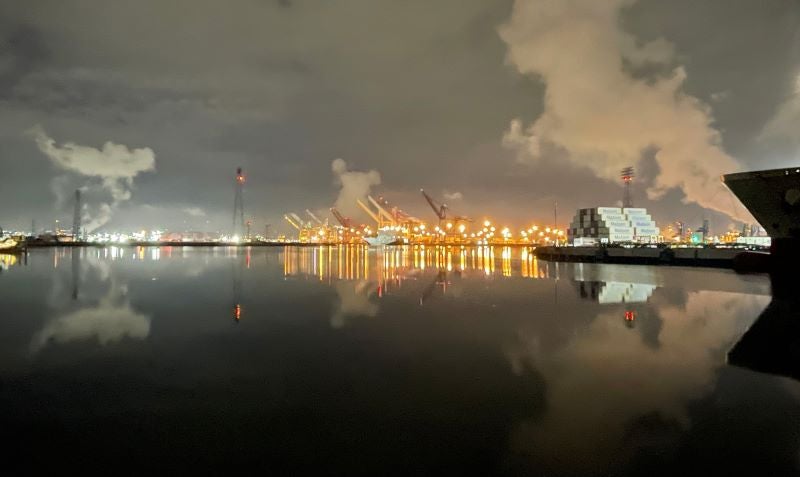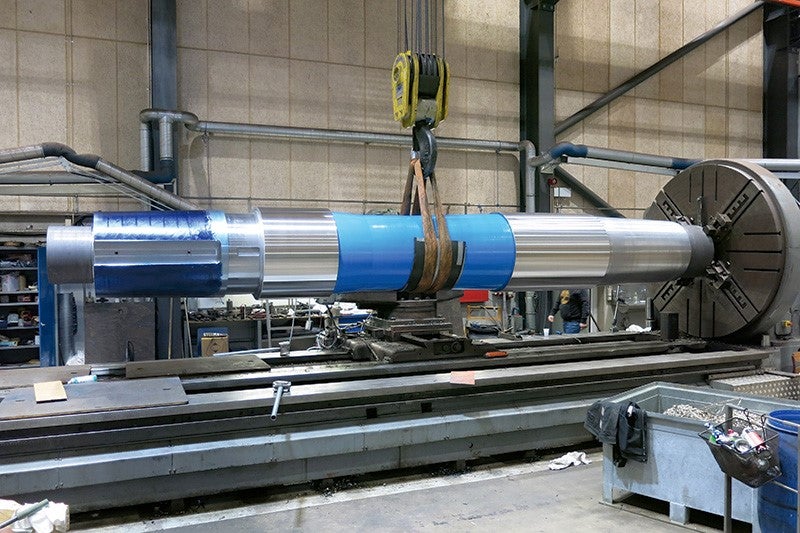

The vessel’s crew immediately reacted and they captured a video of the top of the rudder stock through an inspection port. This determined the reason why the rudder was not responding. The rudder stock was broken at the cone, and the rudder blade had dropped by approximately half a metre.
Crucial decisions had to be made fast. Should the vessel go for dry docking and be towed a much longer distance, risking losing the rudder blade at sea, or should she go with an afloat repair solution?
The decision was made to stay and this turned out to be a speedy and cost-saving solution.
With assistance from a tugboat, the 294m long container vessel was manoeuvred into the inner anchorage.
An underwater service company was assigned with the afloat disassembly task. MarineShaft has worked with this company on several projects, and we know how experienced they are with this type of emergency job. They removed the 110t heavy rudder in the water. This disassembly required tremendous cooperation and experience and everything went by the book.
With the rudder blade and stock ashore and brought to a local workshop, MarineShaft then got involved.
A broken rudder stock and a damaged pintle left replacement as the only option.
We received an urgent inquiry for the manufacturing of one new rudder stock Ø750x6600mm in material C-Mn steel with two shrunk-on stainless steel sleeves, and one rudder pintle Ø900x2585mm in material Mn steel with one shrunk-on stainless steel sleeve.
MarineShaft was able to offer a delivery time of only 15 running days. This short delivery time was only possible because MarineShaft had the raw material on stock with class approval and it was ready to be cut and machined as soon as the order was received. The order also included the manufacturing of a rudder stock lower hydraulic nut and a new pintle nut.
Having solved plenty of complete repair solutions, MarineShaft offered its total packing service solution to the client which included rudder alignment, in-situ machining, blue fit test, and final re-installation and control measurements.
MarineShaft’s mobile machining equipment was urgently sent to the location in the US, followed by four MarineShaft service engineers. The work on-site was performed by two teams of two service engineers working in shifts around the clock.
The new rudder stock was delivered with 4 mm oversize and the pintle with 10 mm oversize on the cones. The reason for this was to have sufficient material to machine in the rudder blade cones and be able to adjust the rudder blade cones if any misalignments were measured.
Onboard the vessel, MarineShaft machined the rudder blade cones and castings. New O-rings had also been manufactured to ensure a tight seal between the rudder blade lower casting and the pintle sleeve. Our engineers worked around the clock and completed the re-installation according to schedule.
For the in-water repair of the rudder horn pintle bearing, it was necessary to build and set up a cofferdam. In cooperation with a local workshop and the underwater service company, MarineShaft assisted with replacing the pintle bush in the rudder horn.
MarineShaft carried out the laser alignment of the pintle bush to ensure a straight line through the rudder bearings.
An urgent repair like this requires trustworthy subcontractors working closely together, ensuring and coordinating so timelines are kept. We have the machine capacity and a skilled workforce. We keep the necessary equipment for on-site machining services and a team of certified engineers willing to step in with short notice to work 24/7.
We are proud to have assisted this vessel in getting back on its schedule with minimum downtime and we thank all involved parties for a fantastic operation. We thank the client for trusting MarineShaft with this project and the involved classification society.
This article mentions no name of the client or other involved parties after agreement with the customer.

